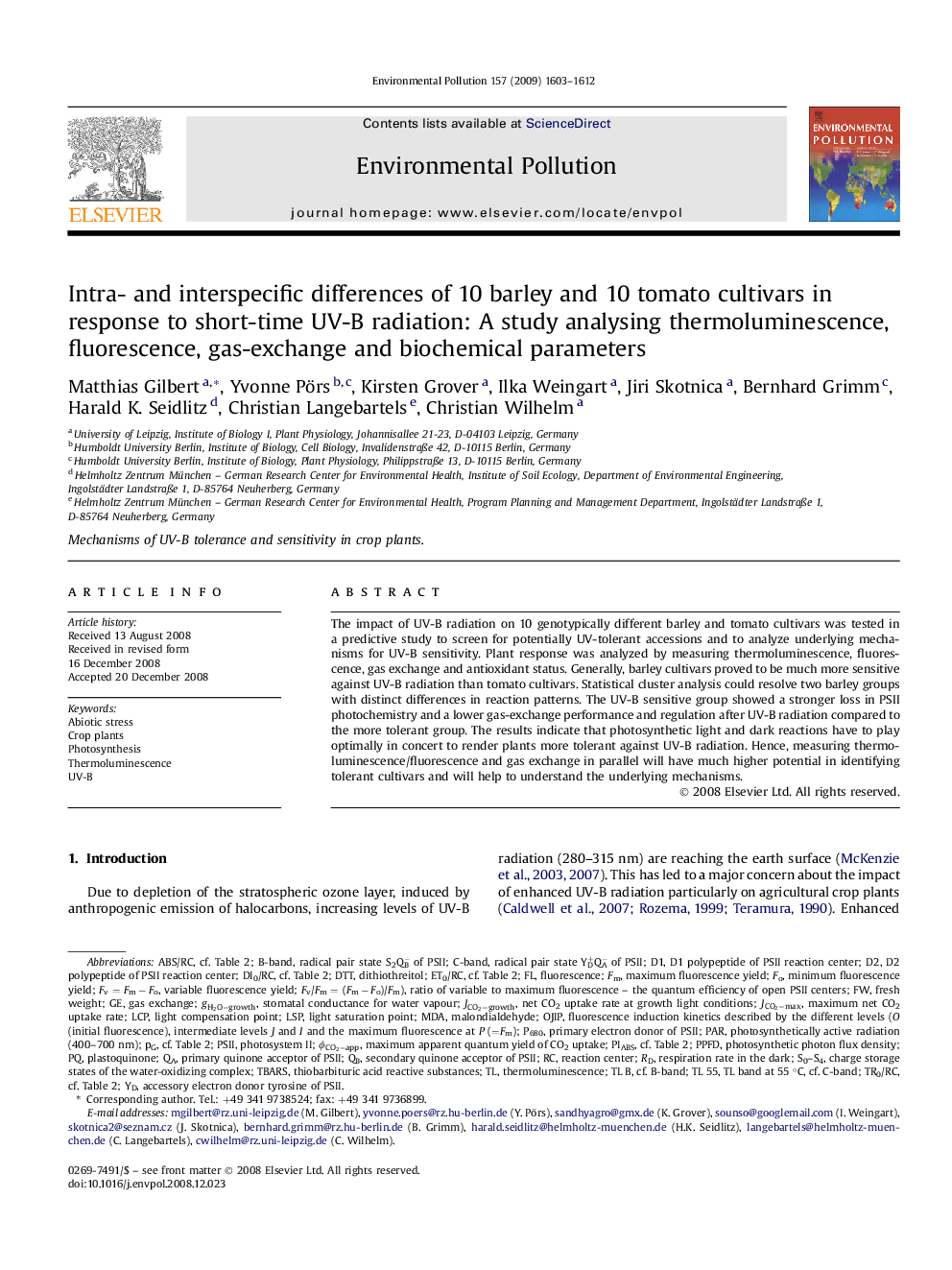| Article ID | Journal | Published Year | Pages | File Type |
|---|---|---|---|---|
| 4425705 | Environmental Pollution | 2009 | 10 Pages |
The impact of UV-B radiation on 10 genotypically different barley and tomato cultivars was tested in a predictive study to screen for potentially UV-tolerant accessions and to analyze underlying mechanisms for UV-B sensitivity. Plant response was analyzed by measuring thermoluminescence, fluorescence, gas exchange and antioxidant status. Generally, barley cultivars proved to be much more sensitive against UV-B radiation than tomato cultivars. Statistical cluster analysis could resolve two barley groups with distinct differences in reaction patterns. The UV-B sensitive group showed a stronger loss in PSII photochemistry and a lower gas-exchange performance and regulation after UV-B radiation compared to the more tolerant group. The results indicate that photosynthetic light and dark reactions have to play optimally in concert to render plants more tolerant against UV-B radiation. Hence, measuring thermoluminescence/fluorescence and gas exchange in parallel will have much higher potential in identifying tolerant cultivars and will help to understand the underlying mechanisms.
